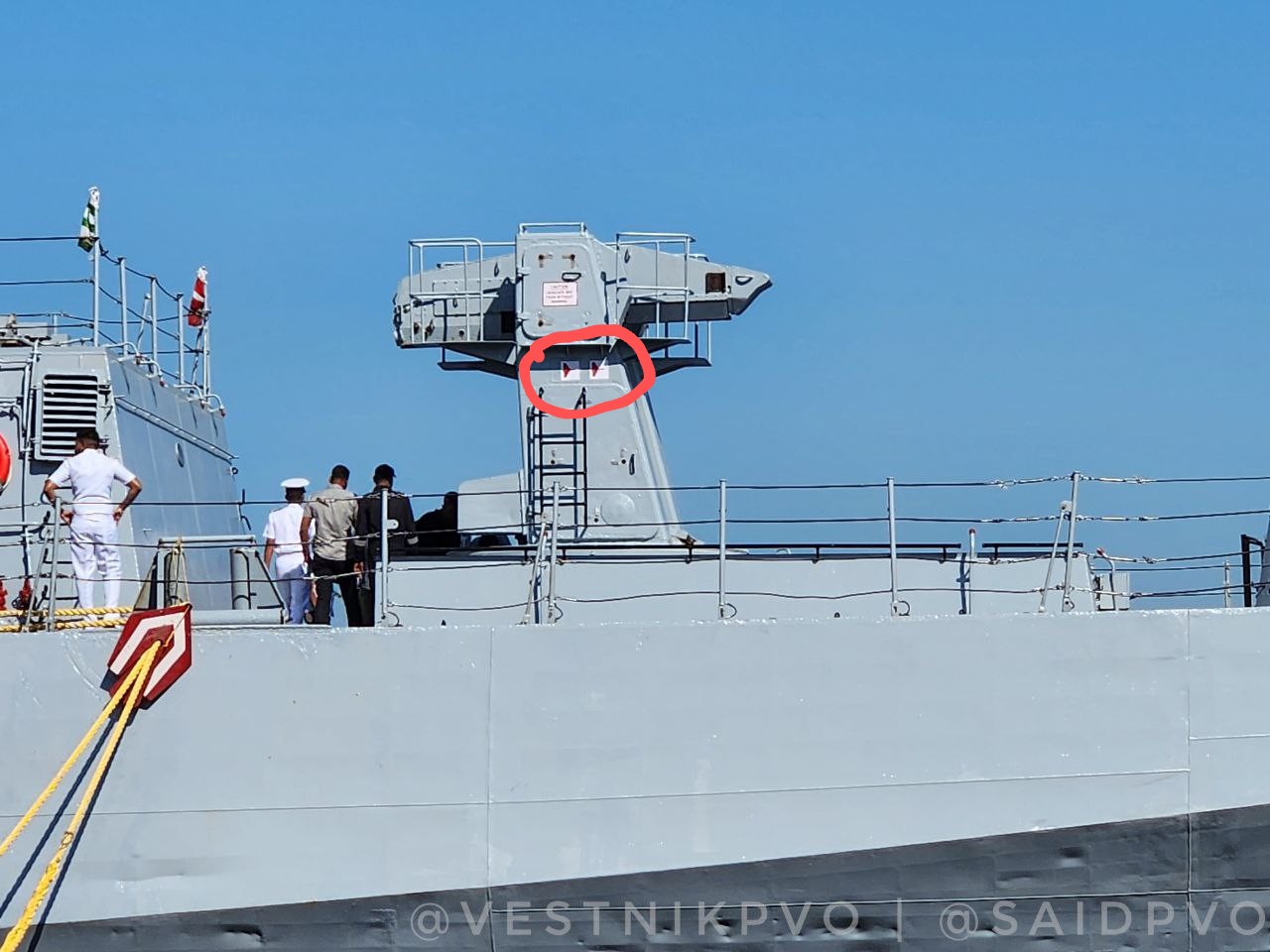The Indian Navy’s frontline warship INS Tabar (Battle Axe) is likely to have shot down two Iran-backed Houthi drones as it sailed through the Red Sea to reach Russia.
India had opted out of the US-led task force for the Red Sea but had deployed at least a dozen warships in the Gulf of Aden and in the Arabian Sea to provide security cover to the commercial vessels traversing the shipping route.
It was the Indian Navy’s largest deployment, which cemented its position as the net security provider. However, the force never publicized this achievement. The achievement came to light during INS Tabar’s recent visit to Russia to participate in the Russian Navy Day celebrations.
AfriPrime App link: FREE to download...
https://www.amazon.com/Africircle-AfriPrime/dp/B0D2M3F2JT
INS Tabar, an Indian Navy’s Talwar-class frigate, was seen sporting two drone kill marks. Open-source intelligence showed that the kill marks were not present during the warship’s Egypt visit. It is speculated that it has been after it that the warship brought down the drones.
Tabar was commissioned in 2004 and is equipped with a BrahMos supersonic cruise missile, Klub missile system, Barak-1 short-range surface-to-air missile for air defense, and Shtil-1 medium-range surface-to-air missile system. It also has a 76 mm Super Rapid Gun and AK 630 rapid-fire Gatling gun system for close defense against incoming missiles and aircraft.
INS Tabar is a Mumbai-based Talwar-class frigate and was born not far from St. Petersburg. The ship was commissioned on April 19, 2004, in the Russian city of Kaliningrad. Tabar is expected to take part in the INDRA-24 exercise, a biennial exercise organized with the Russian Navy.
The Houthis have been attacking merchant ships in this passageway, forcing shipping companies to look for alternate shipping routes. The Red Sea has been vital for the global economy as, according to the United Nations Conference on Trade and Development, 12 percent of global trade passes through it every year.
India neither joined the US-led task force for the Red Sea nor deployed any warships there. However, it had two frontline warships in the Gulf of Aden and at least 10 warships in the northern and western Arabian Seas, along with surveillance aircraft.
Since December 2023, the Indian Navy has deployed 21 ships, over 5,000 personnel, and maritime surveillance aircraft in the region. This deployment is under the aegis of ‘Op Sankalp,’ which was initiated by the Indian Navy in 2019 as a response to the attacks on commercial shipping in the Gulf of Oman.
Before going to Russia, the warship had been on a maritime deployment to Africa. INS Tabar arrived at the historic port city of Alexandria, Egypt, for a goodwill visit from June 27 to 30, 2024. And it was after that the stealth frigate had the kill markings.
The drones seem to be the Drito class UAVs used by the Houthis, the Yemeni rebel group. The Houthis have fired missiles and flown drones into commercial ships in the Red Sea. Their attacks have targeted more than two dozen vessels since mid-December.

Despite the Red Sea being in India’s primary littoral region, India has adopted a different operational approach to the crisis. It has refrained from engaging in kinetic action directed against the Houthis. The reason is the country’s multi-faceted engagement with the West Asian powers and its awareness of the sensitivities associated with the Palestinian issue.
The Indian Navy has been among the first navies in the world to assume a leading role in countering piracy in the region since the late 2000s. Incidentally, in 2008, the Indian frigate INS Tabar sunk a pirate mothership, sending a resounding message to the pirates. It had become the first country to engage in kinetic action as part of the wider anti-piracy operations in the region.
While the rebels claim to be targeting either Israeli-owned or operated ships, some of the vessels at the receiving end of their attacks as not connected with Israel at all. Since the beginning of the attack in October 2023, the Houthis have built up a significant drone arsenal.
Saudi Arabia and the US have accused Iran of supplying the Houthis with drones and other weapons. Tehran has denied the charge, and Houthis claim that the drones have been built domestically.
Andreas Krieg, a military analyst and senior lecturer in security studies at King’s College London, has said: “The Houthis don’t build their own drones, and they don’t build their own missiles. None of them are homemade. They are all assembled in Yemen but are entirely based on Iranian infrastructure, Iranian blueprints, and Iranian technology.”
Houthi drone arsenal includes the Iranian Shahed-136 drones, which are also used by Russia in the war against Ukraine. They have a range of about 2,000 kilometers. Another combat drone model is the Samad-3. Since January, the US military forces have shot down several Houthi drones in the surrounding waters.
The Houthis drones use GPS guidance and fly autonomously along a pre-fed route. In July, the rebels used a new drone named Yafa against Tel Aviv, which is at least 1,800 kilometers away from Yemen. The Houthi military spokesperson has claimed that the drone could deceive the air defense systems and radar detection and conduct the deepest strike by Yemeni drones so far.
AfriPrime App link: FREE to download...


